Year after year, market research studies that look into the brand-consumer relationship reinforce the notion that giving away prizes among target audiences is one of the main ways to generate engagement and build an emotional connection between the consumer and the brand. After all, everybody likes to get a gift, a discount, or any other treat from any given brand. What’s more, at Easypromos, we witness this occurrence day in and day out, the most successful promotions are those in which the brands are generous and creative with the prizes they distribute.
Here is a selection of 10 different promotion dynamics to reward your users. Additionally, all these promotions can work as independent microsites or embedded on a mobile app, a loyalty program, or a private section of a website.
Prize Wheel
The “Spin the Wheel” app is one of our star products as its simple concept has a great appeal to the general audience. Its iconic format is ideal to give away a set number of prizes. We recommend the wheel has a maximum of 10 sections, more than that would make it look cluttered. The greatest advantage of a prize wheel is that all the possible prizes are clearly visible to the participant. Furthermore, the intensity of the spin can be regulated by the participants, which gives them the impression that the result of the spin is not entirely dependent on luck, and that there might be an element of skill. Thus, the Prize Wheel is an optimal tool to capture users’ attention and create a user experience that includes excitement and suspense. An archetypical use of the Prize Roulette is to situate it right after a purchase. For instance, after a customer has finalized a purchase on your mobile app, a prize wheel comes up and offers the chance of winning a gift card or a discount for their next purchase.
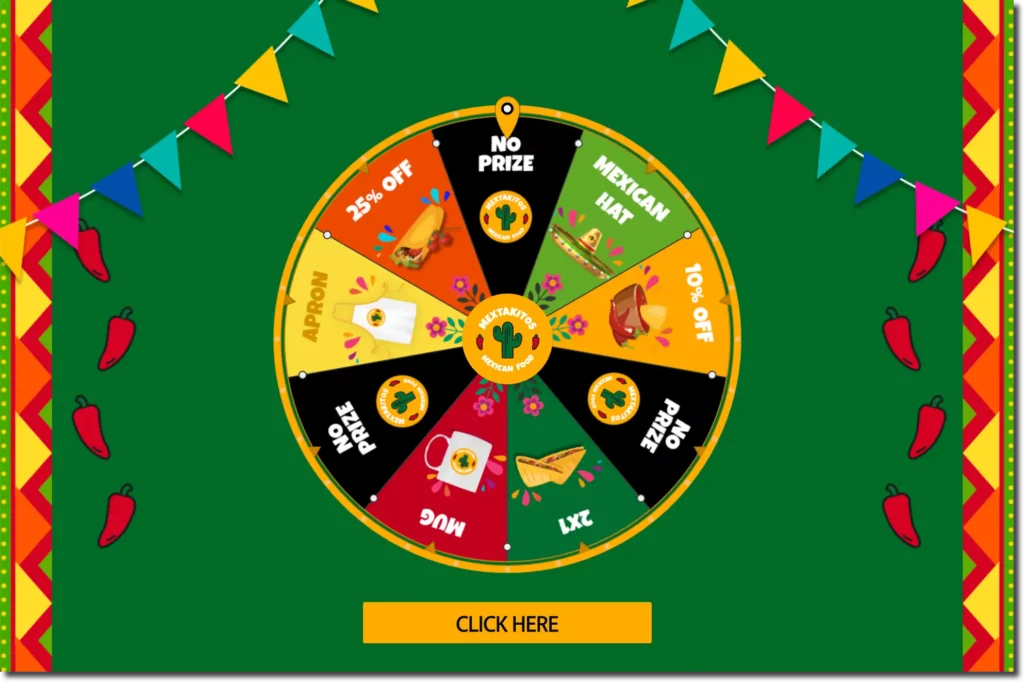
Scratch & Win
The “Scratch & Win” app takes the classic scratch card dynamic into the digital world. In the same way as the “Spin the Wheel” app does with the prize roulette. The dynamic is quite simple, users simply have to “scratch” the screen to find out if they have won. In contrast to the prize roulette, users cannot see the possible prizes prior to participating. Hence, the user experience incorporates a sense of mystery and surprise. This dynamic can be presented right after a purchase both online and offline. Thus, an example of a promotional action that works very well is to use Scratch & Win to reward customers that buy from a shop that belongs to an association, mall, or local chamber of commerce. After the purchase at the brick-and-mortar shop, users receive a QR code and a participation code to access the promotion and obtain discounts for other affiliated shops. This sort of action not only builds customer loyalty but also allows the organizer to collect user data and better understand the target audience. This kind of promotional action is a win-win for customers and participating businesses.
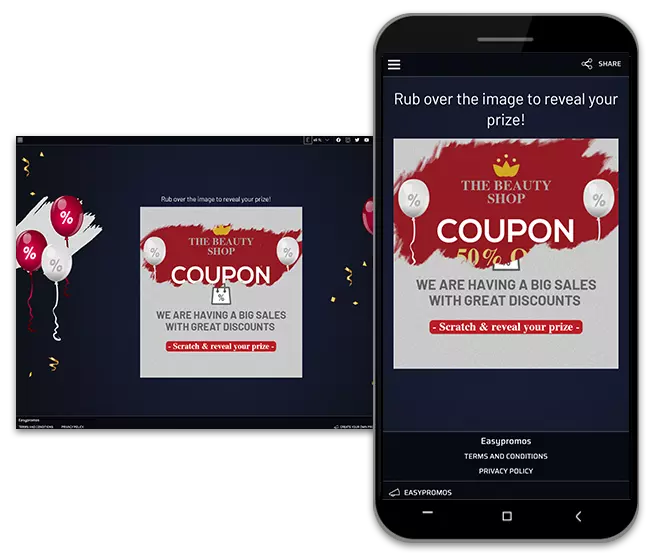
All promotions in the “Instant Prizes” category can issue digital coupons that can be redeemed as a discount, gift, or reward. If you wish to use them to draw foot traffic to your physical store, the prize redemption tool is the solution you are looking for.
Reveal & Win
The “Reveal & Win” dynamic is a variation of “Scratch & Win” in which users have to tap the screen to find a set number of objects in order to win a prize. For instance, customers scan a QR code that is displayed at the checkout, register, upload their receipts, and play. In order to win, users have to find three burgers, three sodas, or three french fries. Whichever product they find three images of, is what they win. This dynamic has a high level of playability and is ideal for businesses with a high volume of low-value transactions, e.g, restaurants, bars, or fast-food establishments.
The prize distribution system in all the aforementioned apps allows the organizer to define whether the prizes will be given away by probability or by Instant Win. In the first case, the organizer can set the odds for each prize to be given away e.g, 2/1000, 5/1000, etc. In the latter, the organizer defines a specific date and hour when each (or some) of the prizes will be given away. For example, in a promotional action that includes small value prizes with more important ones, it is a good idea to give away the small prizes by odds and the bigger ones by Instant Win. This will ensure that the bigger prizes will be distributed throughout the entire length of the promotion.
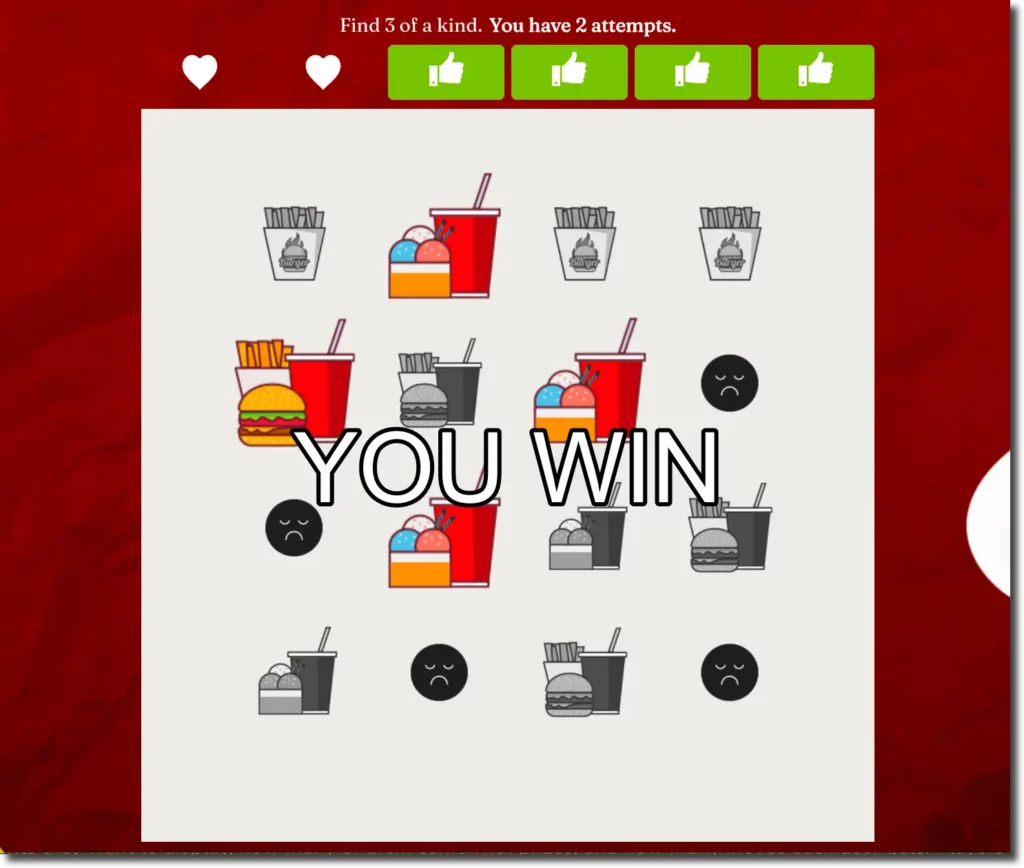
Play and win
In this scenario, users interact with the brand through one of Easypromos’ game apps, e.g, a memory game, puzzle, or word search. After playing the game, users get a score and a position in the ranking, which will be the main variables for the brand’s prize distribution.
We recommend using a combination of prize distribution mechanics to create a more positive user experience. A typical example would be to give a small prize simply for participating and completing the game, e.g, a 10% discount on the next purchase. A bigger prize if the player scores above a certain amount and an even bigger one for the top-ranked player(s). The organizer could wrap up this action with a final prize draw among all the participants, thus giving the brand the opportunity to extend the interaction with the users beyond the moment of playing the game by at least two additional emails. The first email might read: “don’t forget we are giving away X prize among the participants”, and one email more to inform of the results of the prize draw.
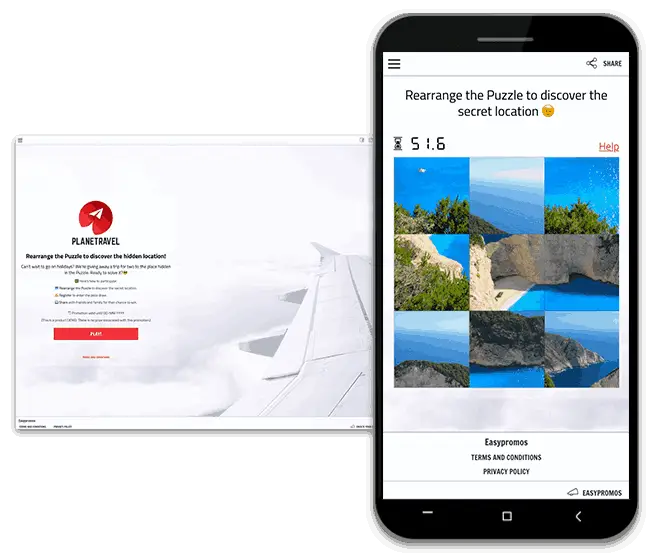
Register and win
“Register and win” is the simplest and most straightforward dynamic we are covering. Users simply register by filling out a customized registration form and once the registration is complete, the system allocates a prize. The prize could be the same for everyone or have different prizes that will be given away randomly or depending on what the user has replied in the registration form. For example, a shopping mall is carrying out a promotion and in the registration form, users are asked about their interests. Users who reply with “sports” will get a discount for a sports shop. Whereas users who reply with “fashion” will get a discount for a clothing shop.
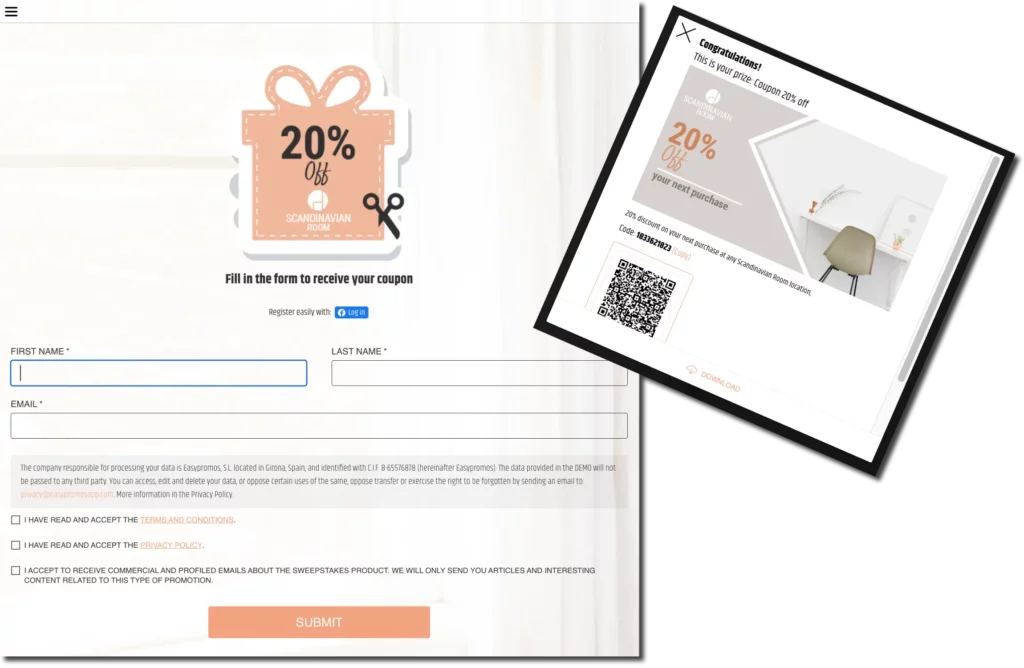
Prize Calendar
The go-to example of a prize calendar action is the Advent Calendar. This is a widely successful kind of promotion as it keeps the audience engaged during the holiday season, which sees a sharp increase in sales. With the prize calendar, users register once and check in daily to find out what each day holds in store. This action allows for a combination of all the previously mentioned promotion types. One day might feature a discount and the next one a Scratch & Win, then a prize wheel, then a game, and so on. The key to this dynamic is to keep users motivated to check in daily. The organizer can give away prizes daily and also reward loyalty with a final prize for those users who checked in every day. Another advantage of such promotion is that it creates a natural and positive communication channel with the audience for an extended period with teaser messages such as: “Don’t miss today’s surprise, you will love it!”. Or reminders like “you still have three more days to open, keep in mind that there is an exclusive prize for those who check in every day!”.
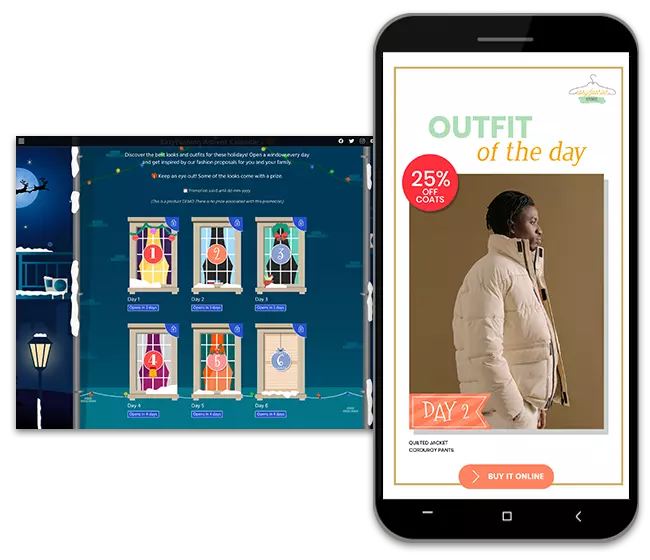
Answer and win
An answer-and-win action rewards users who provide the organizer with information on a specific topic. This might be a quick survey about the brand’s products or services, a questionnaire on users’ preferences, or simply generic questions that help the brand get to know its audience better. At first glance, this kind of promotion might seem to go against the generally accepted usability rules. UX/UI manuals state that organizers should keep the information fields in a registration form to the minimum as each additional field increases the chance of users getting tired and quitting. Be that as it may, including a prize at the end of the process will increase the users’ motivation significantly. Hence, brands can dare to ask users for more information without running the risk of them quitting halfway through the process.
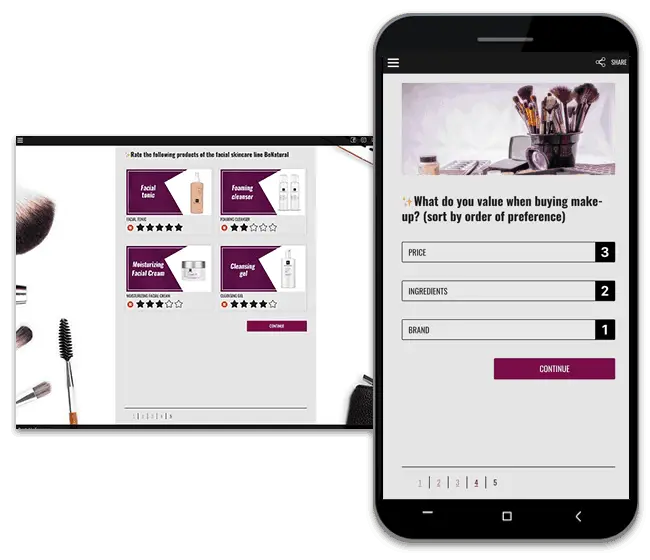
Watch and win
A watch-and-win action rewards users who watch a video, an image, or a text related to the organizing brand. This action is usually combined with other dynamics. E.g, “Watch our latest promotional video to get a chance to spin the prize wheel.” It can also be included in multi-stage promotions such as an Advent Calendar.
This is a useful branding action to reinforce product launches or complex services that require the users’ attention for some time so that the brand can explain its offering. Despite having said that whenever there is a final prize for the user, the brand can be more demanding, it is important to keep in mind that users’ attention span is short. Therefore, videos should be kept under 30 seconds and texts shouldn’t take up more than half of a mobile phone’s screen without scrolling down.
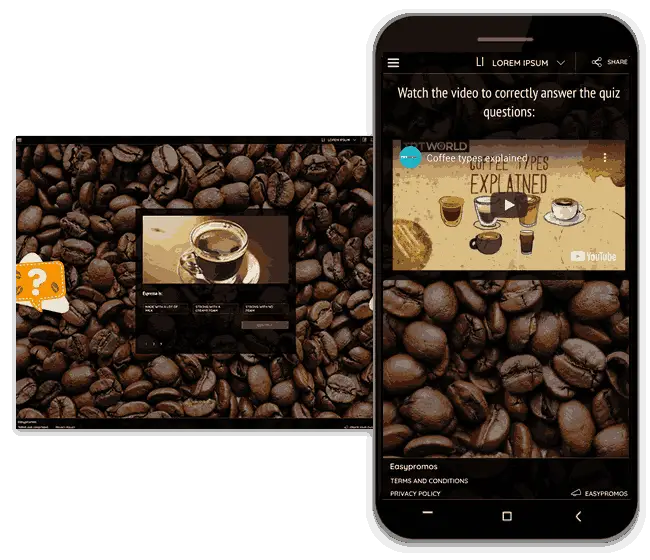
Validate your purchase receipt
Promotions with purchase receipt validation are ideal for retail businesses to reward customers there and then. With Easypromos, organizers can determine the necessary validations of the purchase ticket to ensure that it is real and hasn’t been previously validated. We will not delve extensively into the casuistics of automatic receipt validation, but as a general rule we will state that:
- The more restrictive and specific the validation rules are, the more automated the prize awarding will be. For instance, once the receipt has been deemed valid, users can access a Scratch & Win, a prize wheel, or an instant prize promotion.
- However, if it is not possible to determine a unified set of rules for all the receipts. The alternative is to run a final prize draw among the participants. Moreover, it will be necessary to manually check that the winning receipts are valid. In case they weren’t, prizes would then be awarded to the alternate winners.
An important feature of promotions with purchase receipt validation is that with Easypromos, the prizes awarded can be determined by the amount shown in the purchase receipt. For example, users who spend over €100 will get a bigger prize than those who spend €50.
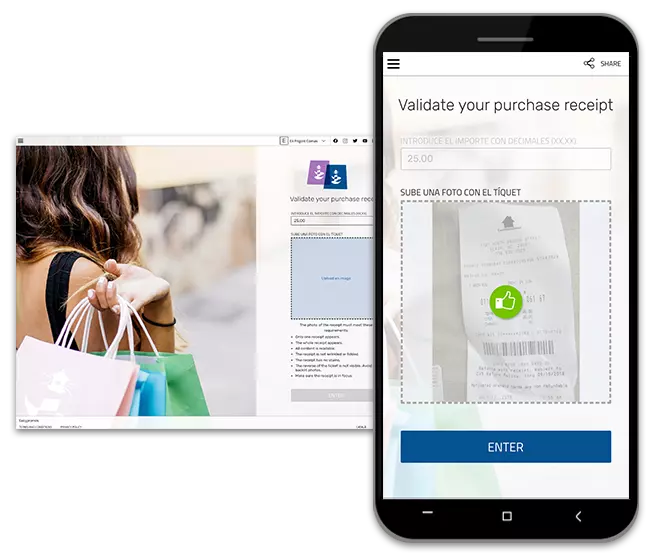
Instant Win
The last action we will look into usually works well as a secondary action for a primary promotional action. For example, in a promotion that rewards users with a 20% discount for registering, the organizer can incorporate an Instant Win to give away additional prizes. Hence, users will get a 20% discount just for registering. But there is an additional incentive of winning a special prize that the organizer has set to be given at a specific date and time.
With Easypromos, the organizer can set concrete dates and times in the calendar for specific prizes to be given away. Thus making sure that the most important prizes are evenly distributed along the length of the promotion. If the organizer has plenty of prizes to distribute and is expecting massive participation, the prizes can be set to be given away automatically. However, if the organizer doesn’t have that many prizes, the moment they are given away can be manually set with the Instant Win feature. For instance, the organizer can set the Instant Win to Monday at 3:00 pm. Thus, the first user to register after that moment will get the prize.
The user experience of an Instant Win promotion resembles that of the promotions that showed the prize below the lid of a consumer product such as a soda bottle or a yogurt. The excitement and anticipation are quite similar.
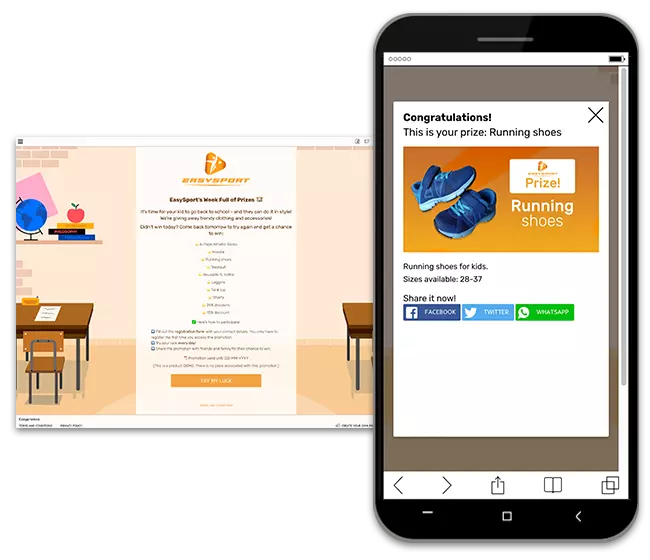
We can conclude that there are three main factors to keep in mind when creating actions to distribute direct prizes: the value of the prize, the number of prizes, and the number of expected participants. With these three variables in mind, the organizer can decide which participation dynamic will provide the best user experience and the most effective management.
The Easypromos platform supports all the dynamics that we have covered in this article and our customer support team is available to clarify any doubt or to show you a DEMO live and advice on what kind of promotion will better fit your needs.
